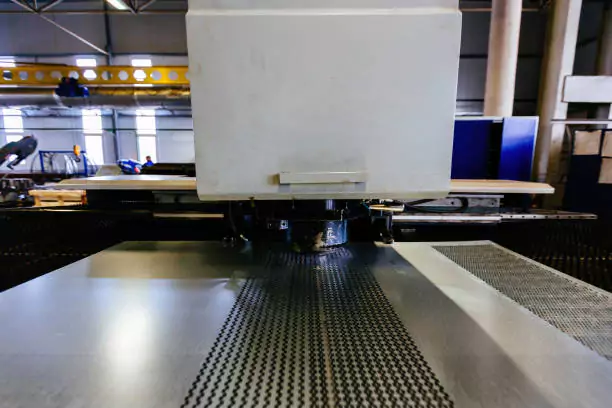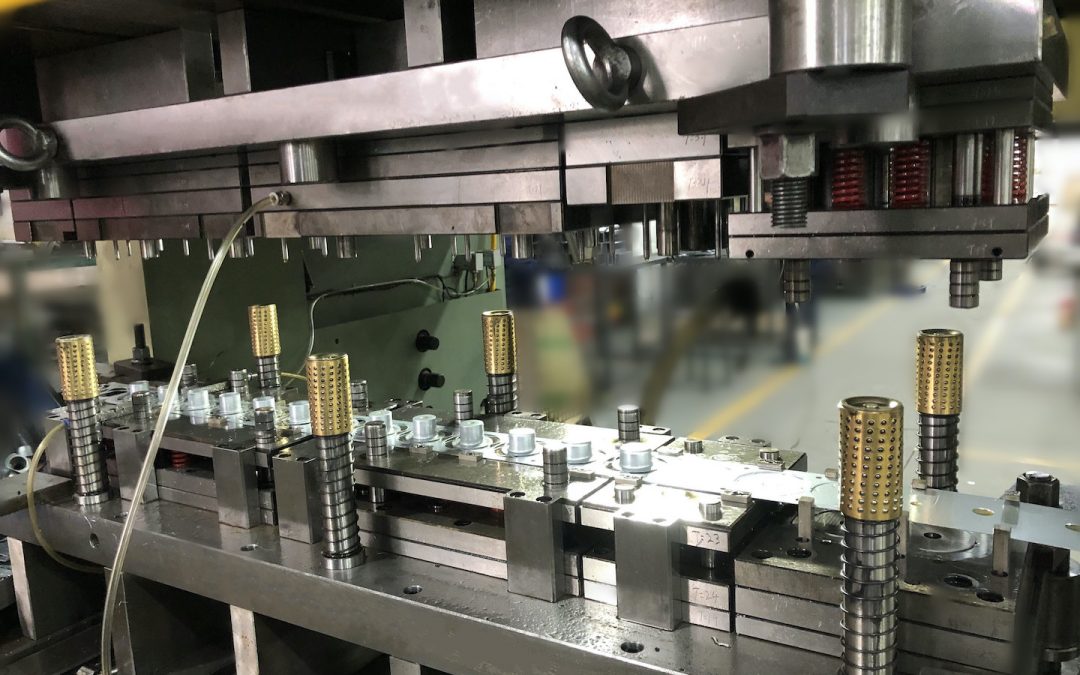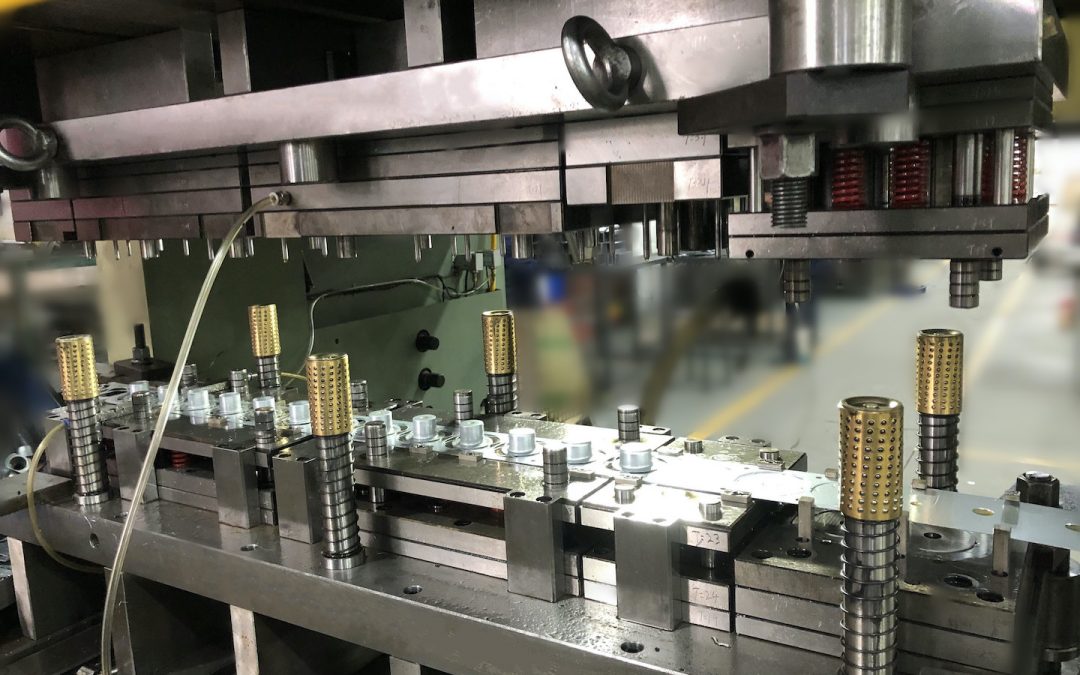In the world of manufacturing, progressive die stamping machines play a pivotal role, especially in industries that demand precision and efficiency. These machines are designed to perform multiple stamping operations in a single pass, making them an indispensable part of the production line. As industrial manufacturers seek ways to enhance productivity and reduce costs, understanding the capabilities and benefits of these machines becomes crucial.

What Are Progressive Die Stamping Machines?
Progressive die stamping machines are automated systems used to produce metal parts with high precision. The process involves feeding a metal strip through a series of stations within the die, each performing a specific operation such as cutting, bending, or punching. By the time the strip exits the machine, a finished component is produced, ready for use in various applications.
The Mechanics Behind Progressive Die Stamping
The process begins with a coil of metal, which is fed into the machine. As it passes through each station, different tools shape the metal into the desired form. This method ensures consistent quality and accuracy, making it ideal for large-scale production. The efficiency of the process is further enhanced by the machine’s ability to perform multiple operations simultaneously.
Advantages of Using Progressive Die Stamping Machines
One of the primary benefits of using progressive die stamping machines is the reduction in production time. By performing several operations in one pass, these machines can significantly cut down on manufacturing times. Additionally, they offer improved accuracy and consistency, ensuring that each part meets the required specifications.
Cost-Effective Production
Another advantage is cost-effectiveness. The automation of the stamping process reduces labor costs, while the precision of the machines minimizes material waste. This makes progressive die stamping a cost-effective solution for high-volume production runs.
Applications in Various Industries
Progressive die stamping machines are utilized across a wide range of industries, including automotive, electronics, and consumer goods. Their ability to produce complex parts with tight tolerances makes them ideal for applications where precision is paramount.
Automotive Industry
In the automotive sector, these machines are used to manufacture components such as brackets, clips, and connectors. The high-speed production capabilities of progressive die stamping machines ensure that manufacturers can meet the demanding requirements of the industry.
Electronics Industry
The electronics industry benefits from the precision and reliability of progressive die stamping machines in the production of parts like connectors and shielding components. These machines enable manufacturers to produce intricate designs with consistent quality.
Consumer Goods
For consumer goods, progressive die stamping machines are instrumental in producing parts for household appliances, furniture, and more. The versatility of these machines allows for the production of a wide range of components, meeting the diverse needs of the industry.
Challenges and Considerations
While progressive die stamping machines offer numerous benefits, there are challenges to consider. The initial investment in machinery can be substantial, and the complexity of the dies requires skilled technicians for maintenance and setup.
Maintenance and Setup
Proper maintenance is crucial to ensure the longevity and efficiency of the machines. Regular inspections and timely maintenance can prevent costly downtime and extend the life of the equipment. For more on maintenance, visit our Stamping Die Maintenance Guide.
Technical Expertise
Operating these machines requires technical expertise. Skilled operators must understand the intricacies of the machines and the dies to ensure optimal performance. Training and experience are essential to maximize the benefits of progressive die stamping.
Future Trends in Progressive Die Stamping
The future of progressive die stamping machines looks promising with advancements in technology. Automation and digitalization are set to enhance the capabilities of these machines, allowing for even greater precision and efficiency.
Integration with Smart Manufacturing
As smart manufacturing becomes more prevalent, the integration of progressive die stamping machines with IoT and AI technologies is expected. This will enable real-time monitoring and predictive maintenance, further improving productivity and reducing downtime.
Sustainability in Manufacturing
With an increased focus on sustainability, manufacturers are exploring ways to minimize waste and energy consumption. Progressive die stamping machines, with their efficiency and precision, are well-positioned to contribute to sustainable manufacturing practices.
Conclusion
In conclusion, progressive die stamping machines are a cornerstone of modern manufacturing. Their ability to produce high-quality parts efficiently and cost-effectively makes them an invaluable asset to various industries. As technology continues to evolve, these machines will play an even more significant role in the future of manufacturing.

Frequently Asked Questions
What is a progressive die stamping machine?
A progressive die stamping machine is an automated system used to produce metal parts through a series of operations within a single die. It is designed to perform multiple tasks such as cutting, bending, and punching, resulting in a finished component ready for use.
What are the benefits of using progressive die stamping machines?
The benefits include reduced production time, improved accuracy, and cost-effectiveness. These machines are capable of performing several operations in one pass, which minimizes material waste and labor costs.
What industries use progressive die stamping machines?
Progressive die stamping machines are used in various industries, including automotive, electronics, and consumer goods. Their precision and efficiency make them ideal for producing complex parts with tight tolerances.
For more information on metal stamping, you can visit an external resource on metal stamping.
This article contains affiliate links. We may earn a commission at no extra cost to you.

